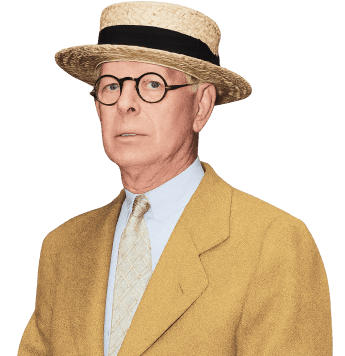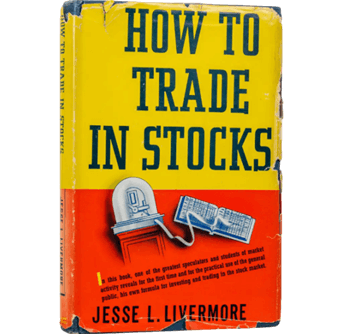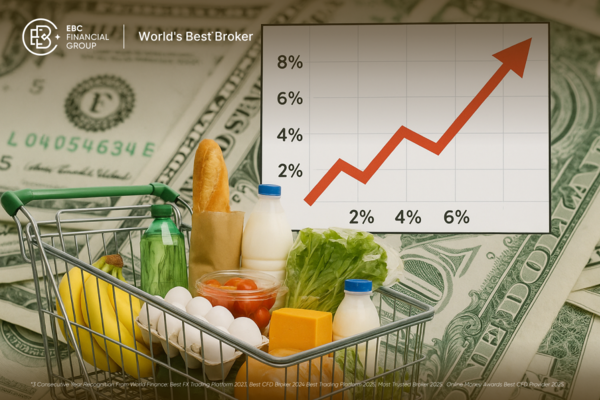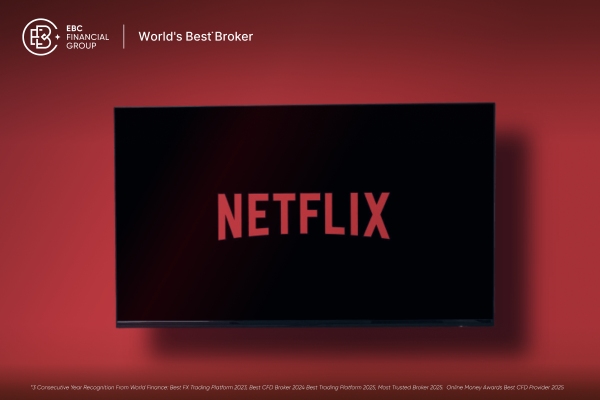Who is the most influential investment and trading master in modern times? Do
names like Buffett and Soros come to mind? Maybe if you go around Wall Street
and ask, you will hear a very frequent name: Jesse Livermore, who was revered as
the King of Trading. Have you heard of him? Like Buffett, Soros, and others, he
is considered one of the most outstanding investment traders of the last
century. On the American economic and financial stage, his influence has forced
Wall Street financial giants and the government to bow their heads and beg for
mercy.
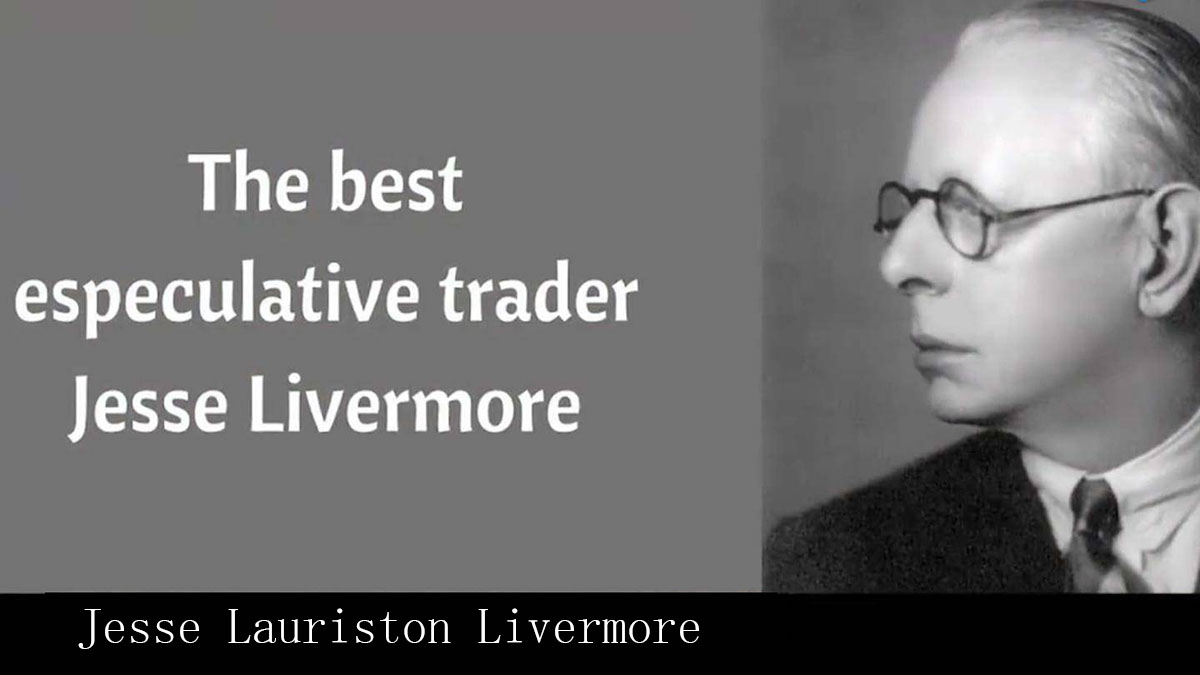
Jesse Livermore, born in 1877, was already a figure two centuries ago. His
story begins in Massachusetts. His family was poor when he was a child, and he
decided to run away from home when he was 14 years old. With only five dollars
given to him by his mother, he began a wandering and legendary life. In that
era, there were many places in the United States that were called "buckets,"
which were equivalent to stock casinos. You can imagine it as a casino. You go
in and bet on whether stocks will rise or fall. It is similar to buying and
selling stocks, but in fact, you don't actually buy or sell physical
objects.
At this time, the little trading king became very interested in Stock Prices.
By observing price fluctuations and recording them in a small notebook, he found
that stock prices tended to fluctuate within a range. So, he formulated a simple
strategy: buy at the low end of the range and sell at the high end. This
strategy allowed him to earn $200 in a week and easily buy his mother a house
for $1,000 at the age of 17.
So in Boston's stock casino, the name of the trading king gradually spread,
attracting a lot of attention but also causing dissatisfaction in the casino.
Eventually he was blacklisted, and his financial opportunities in Boston were
blocked, so he decided to go to New York. At this time, he discovered that the
real stock market was not as fun as he imagined. The market changed rapidly, and
the prices he saw in the casino were lagging. The actual transaction costs may
be higher, and the liquidity is good and bad. His short-term, high-frequency
trading strategy cannot work in the real stock market. Then he realized he
needed to change his strategy.
After in-depth research, the trading king found that stock prices do not
fluctuate randomly, but there are key points, such as support and pressure
levels. He recognized that stock prices would fluctuate within these areas in
the short term and, once they broke out of these areas, could continue to rise
or fall. This subversive thought upgrade led him to the next stage of trading,
which is to follow the trend. The success of this strategy made him famous in
the stock market, and his net worth reached one hundred thousand US dollars.
Of course, this process was not smooth sailing for him. For example, he was
too timid to sell a waist stock early, which resulted in a regrettable loss.
This laid the foundation for his later trading principle: don't rush to sell on
profitable trades.
After making a large sum of money in the stock market, he was overjoyed and
immediately rushed into the cotton futures market. It was not as simple as
imagined, but the easy situation was shattered before his eyes, so he easily
lost more than half of the $50,000 investment. There is a very important reason
for this: he is reluctant to sell when he suffers a small loss, always hoping to
recover the loss, which ultimately leads to a more serious loss. This leads to
the second trading principle: for losing trades, if you are not confident about
the prospects, you should stop the loss immediately.
This principle echoes the first. When a stock falls, most people's
instinctive reaction is to wait and see, hoping to wait for the stock price to
recover. Some may even consider buying some more to reduce costs and wait for
future increases. Both of these principles tell us to resist our own instincts.
Good trading is often based on rigorous analysis. If the transaction is based on
thoughtful analysis and ultimately makes a profit, then the probability of this
analysis is relatively high. On the contrary, if you start to lose money, it
means that your judgment may be wrong. At this time, you should stop the loss in
time; otherwise, you may lose more.
Of course, this is based on careful analysis rather than blind guesses about
future trends.
The trading king's trading strategies and ideas continued to improve, and his
wealth gradually accumulated to one hundred thousand US dollars. In 1907,
markets lost trust, and people ran to banks. The strategy adopted by the trading
king in the second stage is to follow the trend and fully use this essence to
judge that the market is about to collapse. He decisively shorted the market and
successfully made a fortune. At this time, the U.S. government was nervous and
worried about the economic crisis, so it turned to JPMorgan Chase for help.
Morgan found out that the trading king was short selling and took the initiative
to come to him to intercede, hoping that he would stop the operation. Taking
into account Morgan's face, the trading king decided to close the position and
go long on the backhand. The result was just as he expected. Under the market
operations of the big guys, the stock market rebounded rapidly. The trading king
made one million US dollars in one day, and his net worth reached five million
US dollars.
This success also made the trading king fall into arrogance, and he began to
squander money, buy yachts and luxury houses, and make friends with famous
ladies. He was immersed in the joy of success and thought the whole world
belonged to him. This is exactly the mistake that many people make after
success; that is, they are too careless, spend money like water, and ignore the
risks.
In the second year after successfully making money, the trading king once
again entered the cotton futures market. At this time, a friend who claimed to
be the Cotton King gave him some inside information and suggested that he do
more cotton. Although dubious, the trading king increased the leverage and
started buying cotton futures. Unexpectedly, the cotton king joined forces with
other suppliers to sell off cotton in large quantities, causing prices to
plummet and the trading king to go bankrupt again.
This blow was very heavy for the trading king, prompting him to add a
principle to his trading principles: believe that you can listen to what others
say, but you cannot take full credit. The trading king can only lick his face
again and borrow money from friends, hoping to make a comeback. At this time, he
was 39 years old and more cautious than before. He spent six weeks without
making a single transaction, but instead waited and studied the market's
quotation trends. I hope to find a good time. He happened to seize the time of
World War I and knew that the demand for metals would increase during the war,
so he invested a large amount of money to buy shares of a steel company at a
purchase price of $98. The stock rose to $115, but he insisted on not selling,
applied his first trading principle, and even continued to increase positions
and increase leverage. Finally, when the stock reached $145, he felt it was
enough, quit, and made his initial capital back.
Such trading plots are often psychological games. The trading king's
strategies become more and more mature, and he makes more and more money,
gradually understanding the core of the game in the market. He upgraded his
strategy, ushered in his heyday, and once again made money. The trading king was
no longer satisfied with this and began to enter the cotton futures market. This
time, he thoroughly figured out the correct way to open the cotton market and
squeezed the market by buying futures. He used gray means and public opinion
manipulation, which once made it almost impossible to buy cotton in the market.
The U.S. government felt nervous, and the White House sent someone to find the
deal king urgently and asked him to stop. To save face for the government, the
trading king stopped the operation.
It is undeniable that the trading king became more and more successful in the
futures market and then ran on the wheat and corn markets, achieving another
upgrade. His decisions and strategies have made him a dark horse in the market,
constantly refreshing his legend of success.
As time goes by, the trading ideas of the trading king become more mature,
and he gradually develops his own set of unique trading rules. He proposed the
famous "Moore's Law", which states that "price changes always move in the
opposite direction." This law is considered to be the pioneering work of stock
market technical analysis theory and has had a profound impact on subsequent
technical analysis schools.
In 1925, the 48-year-old trading king was worth tens of millions of dollars.
At this time, he summed up an extremely important principle in trading: don't
rush into the market when the opportunity is not obvious enough. Patience is the
most difficult thing to maintain during the trading process. Although it seems
simple, I personally think this is the most wonderful point. In short, when you
don't have a good idea, don't act rashly. Many people feel the same way about
stock trading, because when analyzing strategies and transactions, the most
difficult thing is not to come up with a powerful analysis method but to sit
back and wait for good opportunities.
In 1929, the trading king noticed that many leading stocks in the market were
showing signs of slight malaise and vaguely smelled the breath of crisis. This
is a once-in-a-lifetime opportunity for him. He had successfully shorted wheat,
cotton, and certain stocks before, but this time he wanted to short the entire
U.S. stock market. In order to cover up his losses, he hired more than a hundred
brokers to secretly start short selling. On October 29, 1929, which we often
call Black Tuesday, the U.S. stock market suffered an indescribable plunge. The
U.S. government had repeatedly begged for mercy before, but to no avail this
time, leading to the worst economic depression in U.S. history.
Faced with this once-in-a-century opportunity, the trading king used his
lifelong experience and skills to defeat his own instincts. When the market was
depressed, the trading king cleverly took advantage of the opportunity. This act
of jeopardizing the country's wealth was not viewed favorably in the moral
context of the time because capitalists like J.P. Morgan and Trading King often
lacked moral restraint in the absence of supervision.
However, wealth did not bring happiness. The trading king's second wife was
addicted to alcohol and even had a quarrel with her son; she shot and wounded
him and almost took his life. Later, he divorced his wife and suffered from
amnesia, and his career was in chaos. As a result, the United States established
a regulatory agency, the SEC, which made the trading king's sexy operations more
difficult.
In 1934, the once-billionaire trading king went bankrupt for the third time.
To this day, why he went bankrupt remains a mystery. This time, the trading king
could no longer make a comeback and even suffered from depression. At the age of
63, he chose to end his life. This was the life of trading king Livermore. He
ran away from home with five dollars in his pocket at the age of 14. He
experienced three ups and downs, three bankruptcies, and finally became a
billionaire. However, he ended his life by committing suicide.
Although the trading king failed to stick to his trading principles, his
trading concepts had a profound impact on later generations and were adopted by
many modern masters. Finally, he gave everyone the classic principle of the
trading king: "The market is never wrong; only human nature will make
mistakes.”
Disclaimer: This material is for general information purposes only and is not intended as (and should not be considered to be) financial, investment or other advice on which reliance should be placed. No opinion given in the material constitutes a recommendation by EBC or the author that any particular investment, security, transaction or investment strategy is suitable for any specific person.







